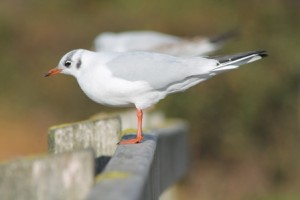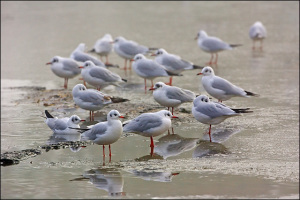Black-headed Gull (Chroicocephalus ridibundus)
For breeding, the Black-headed Gull requires the presence of sheltered, shallow water, where it can indulge in its favoured foraging methods, such as flying low over the surface and dipping down or plunging in after prey. Scientists have shown that being white below aids the capture of waterborne prey; birds dyed black on their bellies were more conspicuous to fish and invertebrates, and their foraging success diminished as a result. Birds also snatch food as they swim and, in many places, they leave the water to search for insects and worms on land. In addition to these conventional feeding methods, Black-headed Gulls will also hawk high in the air scooping up swarming insects, and they are among the few gulls that may land on trees and bushes to take a meal of berries. In short they are omnivores and opportunists, like all the successful gulls.
Colonies are dense and often large, with hundreds or even thousands of pairs. The birds keep the peace with a wide range of displays and gestures, one of the most prominent being the Swoop-and-Soar display, in which rival males indulge in a chase that culminates in one bird almost hovering over the other, calling loudly. The ground displays tend, as might be expected, to involve the prominent head markings. A bird challenges another by lowering its head to show off the brown hood, and if it wishes to be somewhat more threatening it performs the evidently rather rude Head-Flagging display, in which the bird turns slightly away from its rival to show its prominent white nape. But these are just a few of the many displays – just a few nouns in what is a complex language.


